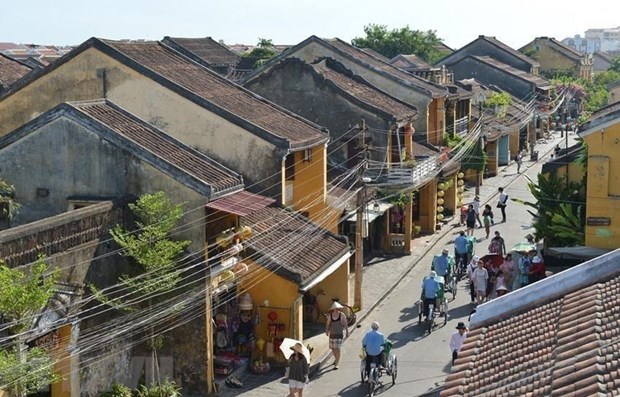The authorities of Muong Ang District in Dien Bien Province have chosen Nam Cum Village as its first locality to develop community based tourism due to its unique beauty landscapes and rich ethnic culture.
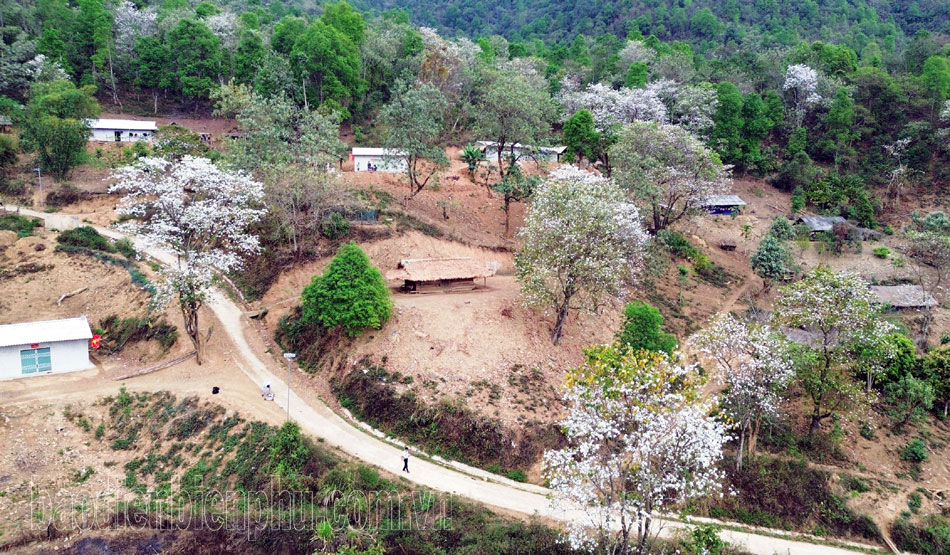
Many ‘ban’ trees are grown among houses of ethnic Mong people in Nam Cum Village creating a unique beauty for the local area. Photos: Anh Nguyen
Nam Cum Village in Ngoi Cay Commune is home to over 70 households, all of whom are Mong people.
Surrounded by more than 1,200 hoa ban (bauhinia) trees of many years old, it is one of the rare villages in Muong Ang that still retains the pristine and rustic beauty of a highland village.
The Muong Ang District has recently coordinated with various tourism authorities and organisations to conducted a survey of tourism potential in ethnic minority and mountainous areas in Nam Cum Village.
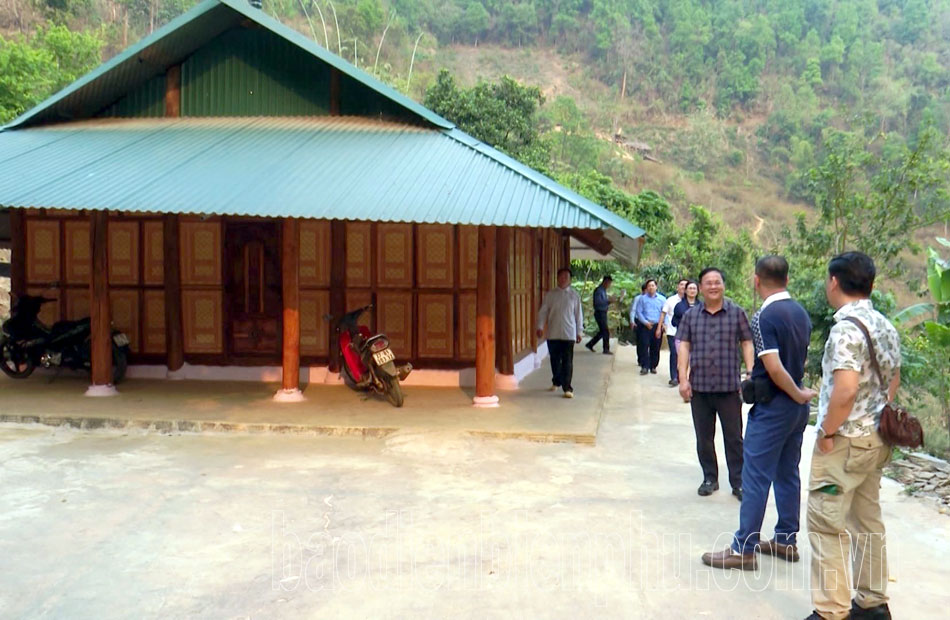
A survey team from the Asian Tourism Development Institute and Community Tourism Association visit Nam Cum Village.
The units participating in the survey include the Asian Tourism Development Institute, the Viet Nam Community Tourism Association, the Viet Nam Institute of Housing and Urban Development, the provincial Department of Culture, Sports and Tourism and experts in the field of tourism development and services
Through the survey, experts highly appreciated the natural beauty of the village and affirmed the potential and advantages of building and developing it into a community tourism destination.
There is a great potential to boost tourism products by focusing on cuisine, ethnic costumes, festivals, and experiences imbued with the traditional cultural identity of the Mong ethnic people, according to the surveyors.
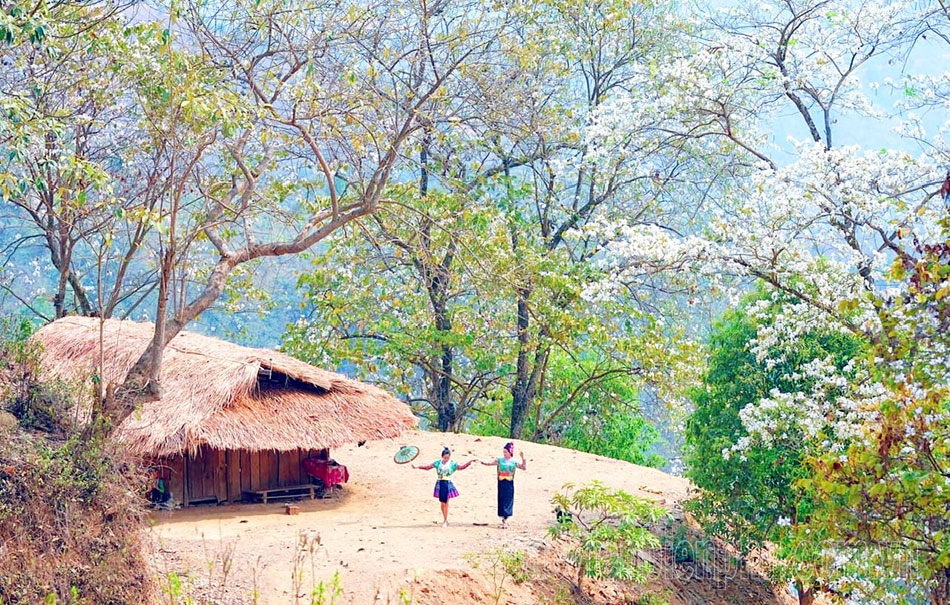
Nam Cum Village still retains traditional houses of the Mong ethnic people.
Mua A Lau, the village leader, said: “Agricultural production and animal husbandry are the main occupations of villagers so life still faces many difficulties. The poverty rate is high accounting for 95.3 per cent. Currently, the total food coverage per capita reaches 300kg of rice/person/year. Since the community tourism survey was conducted in the village, everyone have been very happy and excited. If a plan to be implemented, villagers will benefit and have the opportunity to increase their income.”
Family heads and reputable villagers have also instructed their children to well implement the Party’s guidelines and policies, the State’s laws, and village rules to preserve and promote the local cultural identity.
Villagers regularly participate in cleaning village roads and planting flowers to create a green, clean, and beautiful landscape. Especially now, the village is focusing on protecting the ancient ban tree forest which is recognised as one of the highlights that attracts tourists.
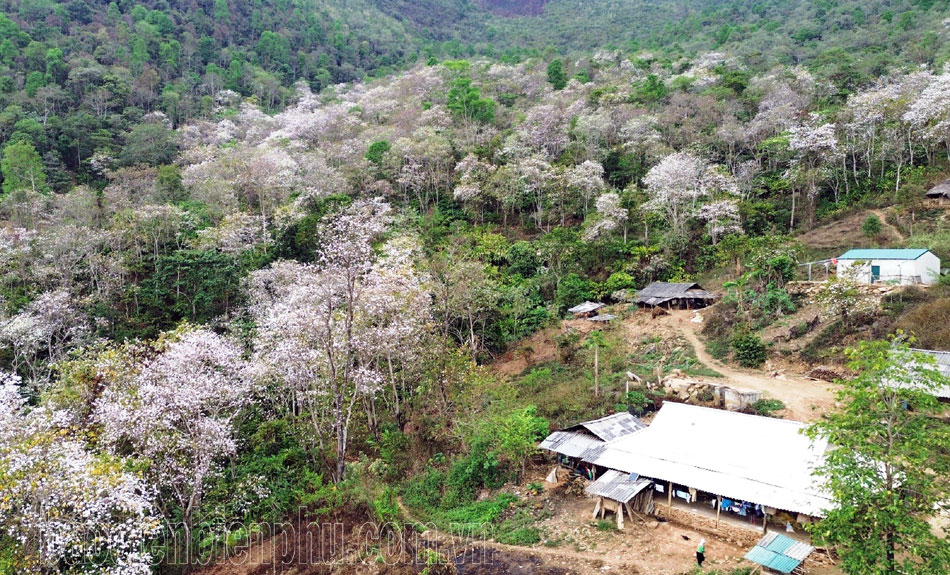
The ancient ‘ban’ forest in Nam Cum from above.
Nguyen Tien Dat, Secretary of Muong Ang District’s Party Committee, said: “With available potential and advantages, the district determines to develop Nam Cum into the district’s first community tourism village. In the coming time, the district is focusing on mobilising all resources to renovate and upgrade internal roads; set specific plans creating highlights and unique features for the village to attract visitors. The district also focuses on holding traditional festivals, embellishing and restoring ancient houses imbued with the traditions of the Mong people. At the same time, it will establish tour groups and learn from experiences of successful community tourism models inside and outside the province. The district is calling for investors and travel firms to boost linkage to lure more tourists to the area.”
Article, Photos: Anh Nguyen
Source: Dien Bien Phu News – baodienbienphu.com.vn – May 23, 2024


